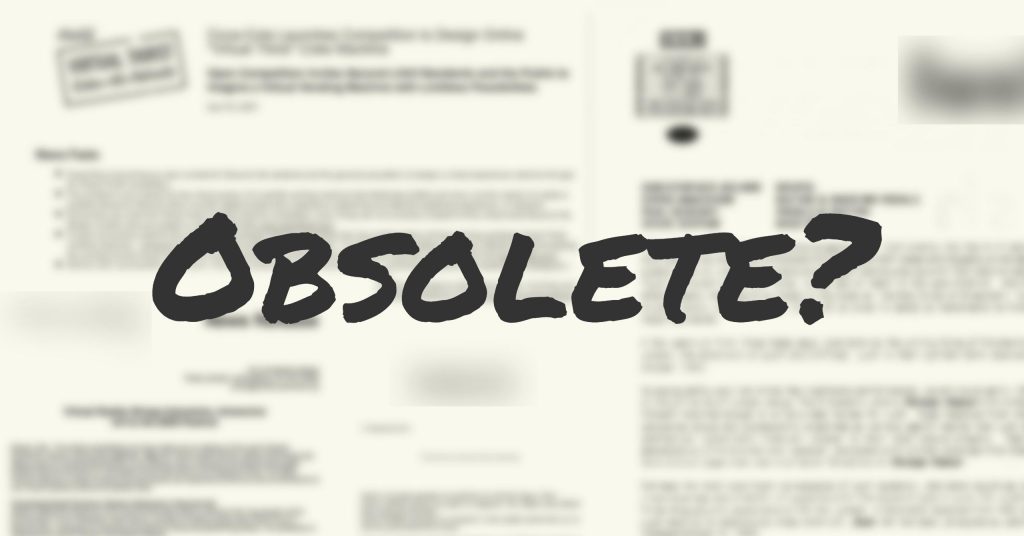Over their many years of interaction, the relationship of Public Relations and Media folks can only be defined as a frustratingly ambiguous “It’s complicated”.
First, to summarise their jobs – PR pitch stories for their clients and get the Media to pick them up as stories/news, while the Media looks towards PR for story ideas and company announcements for their readers.
However, as symbiotic as their relations go, both sides have unresolved feuds with each other.
PR people hate it when the Media bails last minute on events and stories, and Media people hate it when they’re bombarded by irrelevant, pushy pitches. It’s understandable – in order to keep the masses updated and clients happy, both work tirelessly (mostly at odd hours) at their various jobs, and there is simply a lack of time and energy to deal with futile matters.
There have also been articles written by both Media and PR professionals expressing their annoyance at the other party – many of which come from the former. Last year, an opinion piece from a journalist from The Business Times also drew flak from both PR and Media people, expressing that her views were needlessly vicious.

As someone who has experience on both sides, I am here to attempt to bridge both islands, since there are pains individuals of either affiliation go through that cannot be communicated with an email starting with “Dear Editor”.
To be fair, I reached out to contacts working in PR and Media and asked them for their honest opinions on the present state of press releases and the emails tagged along with them. Perhaps the promise that I’ll keep their names and publications/agencies confidential was liberating, as even the PR/Communications people had gripes about current practices.
But first, an introduction to the respondents (not their real names):
PR/Communications
- Vivian, Communications Consultant of 8 Years
- Tim, Asst. Communications Manager of 3 Years
- Anthony, PR Executive of 3 Years
Media
- Maggie, Journalist of 2 Years
- Tammy, Features Writer at a female-centric magazine/Assistant Editor of 3 Years
- Jerald, Writer of 2 Years
#1: Outdated And ‘Going Through The Motions’
Press releases come in the form of a written document, typically with announcements considered to be newsworthy. Photographs and factsheets are also common attachments that come along with these emails (with fingers crossed for coverage) by PR to their Media contacts.
Tammy, who has covered product and service launches in her job scope, admits that while press releases are usually a useful source of information for product details, she finds them rather flat and “going through the motions”.

“I get the sense that a lot are there just because they feel like they should be written…but in an ideal world, if press releases were to be done right, they are really the best way to push information.”
Jerald states, “News needs to be pushed out before it gets stale, so it would definitely help if I get a ‘one stop’ for information, instead of needing to do research on a company their PR would be more familiar with.”
Instead of countering the claims from media, Tim, an Assistant Communications Manager, actually revealed that he too feels that the current state of press releases are not ideal.
“I don’t hate it, I see the value of a press release but it’s an outdated method of communication. In my opinion, the written form of press releases doesn’t serve to inspire in this day and age. Information has to be snappier, more succinct, less fluff, and clearly state the positioning and objective of the announcement.”
Vivian adds on that press releases should be mobile-friendly in consideration of writers on-the-go, with “less fluff, more links and research” and have “strong instant links to images (with) more information provided on a dedicated microsite”.
Takeaway: Solid yet succinct content, include links to updated information.
#2: Inconsistent Quality, Un-informed Messengers
A gripe the writers interviewed also mentioned was the inconsistency of quality across press releases.
“There are some press releases that are really scanty on information, whereas some have pages and pages haha!” recounts Tammy. “I know they’re just trying to cover their ass by putting everything in there lah, but they can still give lots of information but structure it in a way that is more readable and engaging.”
The phrase ‘don’t shoot the messenger’, unfortunately, doesn’t apply to PR folks as they are usually the first on the firing line when it comes to queries from media.
Maggie mentions, “Sometimes when we probe more from what’s written in the Press Releases, we find that the PR people aren’t exactly sure of the point they are making because they are just the intermediary.”

It’s a stressful situation for both sides – one needs to adhere to the client’s wishes, while the other needs to hit deadlines; and with such tight timelines, there is bound to be friction.
As one who has a fair share of ‘middleman’ experience, Anthony emphasises the importance for PR to listen to clients, but also manage their expectations, since “trying to have full control over the PR person over the release is as good as not hiring them at all”.
He agrees, however, that “a release should always be concise with its information, with the most important points being grouped together in a manner that will make sense to the reader.”
Takeaway: Manage client expectations, and be consistent in quality of press releases.
#3: Selling Products Instead Of Telling Stories
Ah, one of the top reasons as to why many press releases are banished to the deep recesses of writers’ inboxes.
Jerald laments, “As writers, our role is to inform and educate our readers. We are not mouthpieces for companies to advertise their products – that’s the job for their marketing team.”
“Company statements and announcements are fine. But those that are trying to advertise something, we tend to ignore. Because to me, I feel like I am betraying the trust of my readers who just want the news from us, and not the ‘selling’. Releases are written in a way that paints the organisation in the best way possible, but they are usually not relevant to our readers.” Maggie states.
To PR folks, unfortunately, this situation mostly feels like being stuck in between the devil and the deep blue sea.
Says Tim, who finds himself caught between idealism and reality, “A lot of press releases are 50% fluff – I’m guilty of doing that too but if I could, I would stop. Unfortunately clients think that fluff covers up the lacking areas…and since they’re the paying customer sometimes it’s just hard to do what I think is right.”
Going forward, however, Maggie suggests, “PR people could be more sensitive of the kind of stories Singaporeans would like to read, and pitch stories accordingly. Their basis shouldn’t be just be on what makes their clients happy, but also what the public would be interested in.”
Takeaway: Press releases are a means to inform, not sell.
#4: Mass Mailing: Quantity Over Quality
The last reason as to why press releases and PR folks get such a bad rep is something that can be argued to be a time saver, but in reality simply serves to fray nerves.
“I think press releases should be recipient specific. I know this is creating more work lah, but I think it works better than spamming all publications,” says Tammy.
When asked if she blacklists PR agencies who flood her mailbox with inappropriate releases, she reveals, “I won’t say I blacklist forever, but it’s annoying when people email me and it’s so obvious that it doesn’t suit our demographic. To me it’s lazy PR, which is more of the problem as compared to press releases as a medium.”
Even after her years in a Communications role, Vivian expresses her frustration when it comes to the rather common practice of mass mailing. “How many actually get picked up? You write so nicely, but in the end the content lies in concise info that will be rewritten in the individual editorial styles.”
However, she appeals to Media to state on their social channels and email sign-offs on how they prefer to be contacted (or not) in hopes for a more productive relationship, because as much as Media dislike being bugged, “we (PR) hate to be bugging them inappropriately”.
Takeaway: Media could state clearly their beats and preferences for contacts, PR people could be more discerning and remember quantity is not quality.
Final Words
After all that’s been said and done, either side may try to deny the importance of the other but the reality is that PR and Media need to work hand-in-hand.
The extent of how much, and if the relationship is a rosy one is another question, but without press releases from PR agencies, the Media would run dry of stories. Similarly, without those producing content in the Media, PR companies will have a hard time disseminating their intended messages.
Let’s all just agree on one ironic thing – the communication between both (which thrive on communication) is still far from perfect.










